Greater London 2020-2045 and Market Garden City
Greater London 2020 is London’s Workable Planned Future and needs to be a regional plan whose detailed implementation will need collaboration across the wider region to create a blend of approaches:
· Densifying and expanding central areas of the city,
· Reviewing the green belt,
· Extending regional hubs towns and cities
· Building new settlements.
Greater London 2020 requires collaboration with surrounding region to share economic, social, cultural and functional relationships.
· Shared transport decisions based on approved Network Rail infrastructure
· Development and ownership of a genuine coordinated strategic spatial plan with no arbitrary boundaries of Green Belt or administrative area alongside long-range economic and infrastructure plans;
· Capturing growth in design, creative, science and technology will fuel the future economy with more knowledge-based employment opportunities and cultural facilities in the region making it possible to attract talent
· Creating Green infrastructure is as important an investment as the built environment so both need realistically integrated designs.
Greater London 2020 ensures London and its region will benefit from previous urban infrastructure investment, which has shaped existing connectivity and place. This heritage requires a programme of renewal to make best of under-used rail lines or sites that can be made to work better for London, increasing the density around outer suburban and rural rail stations where there is also adequate road capacity.
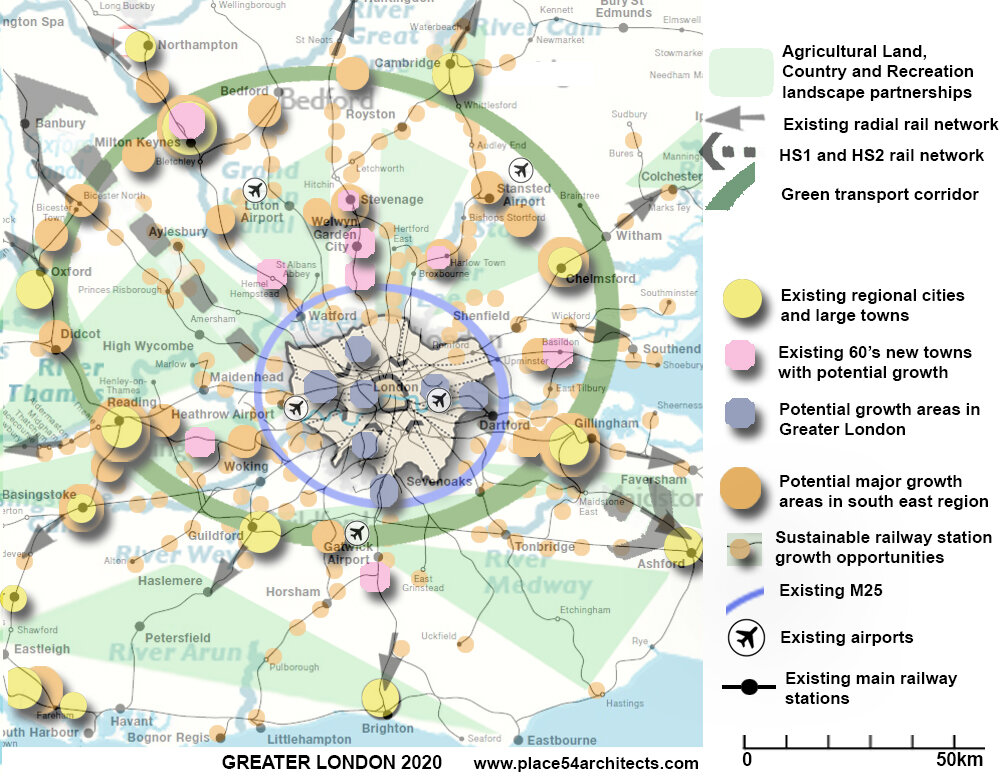
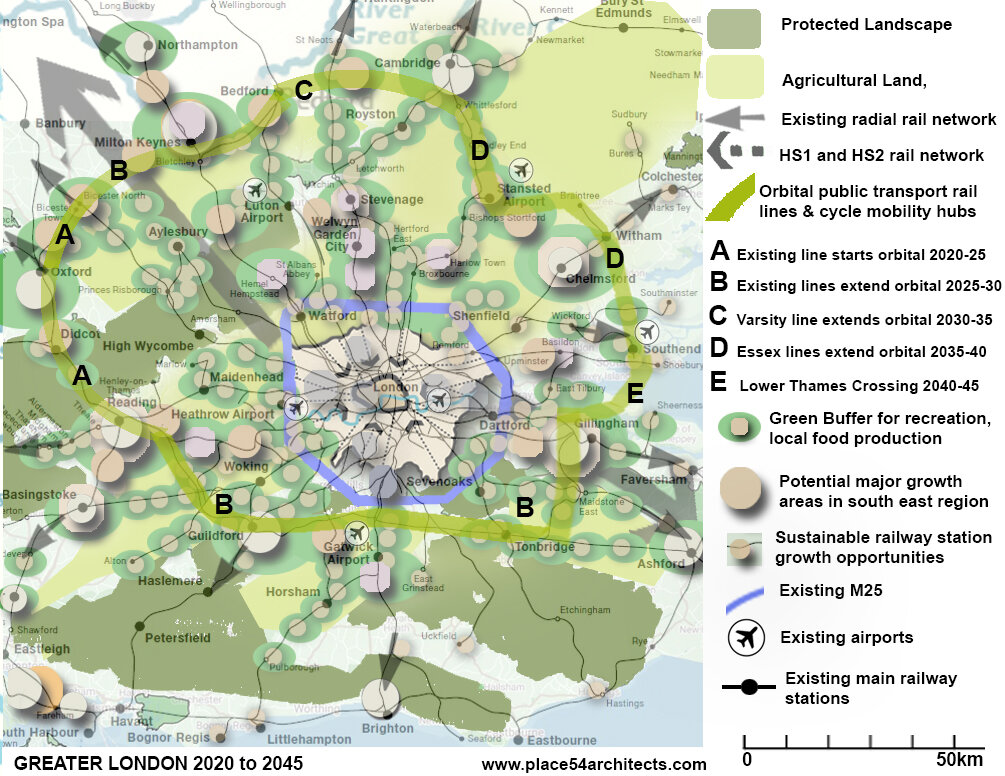
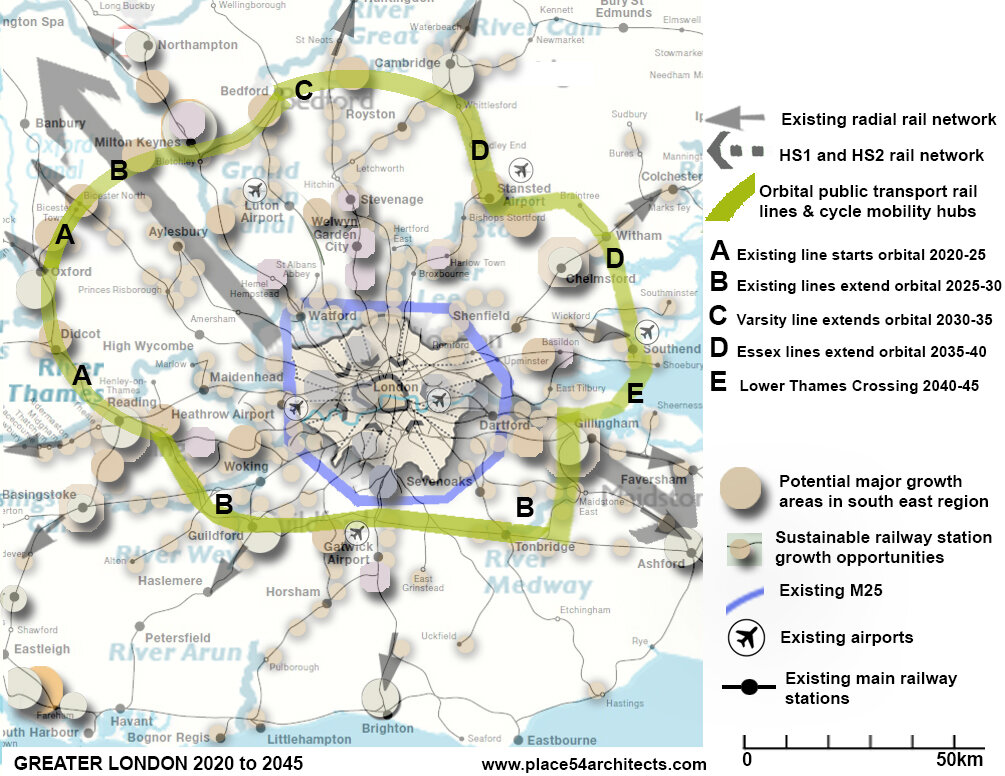
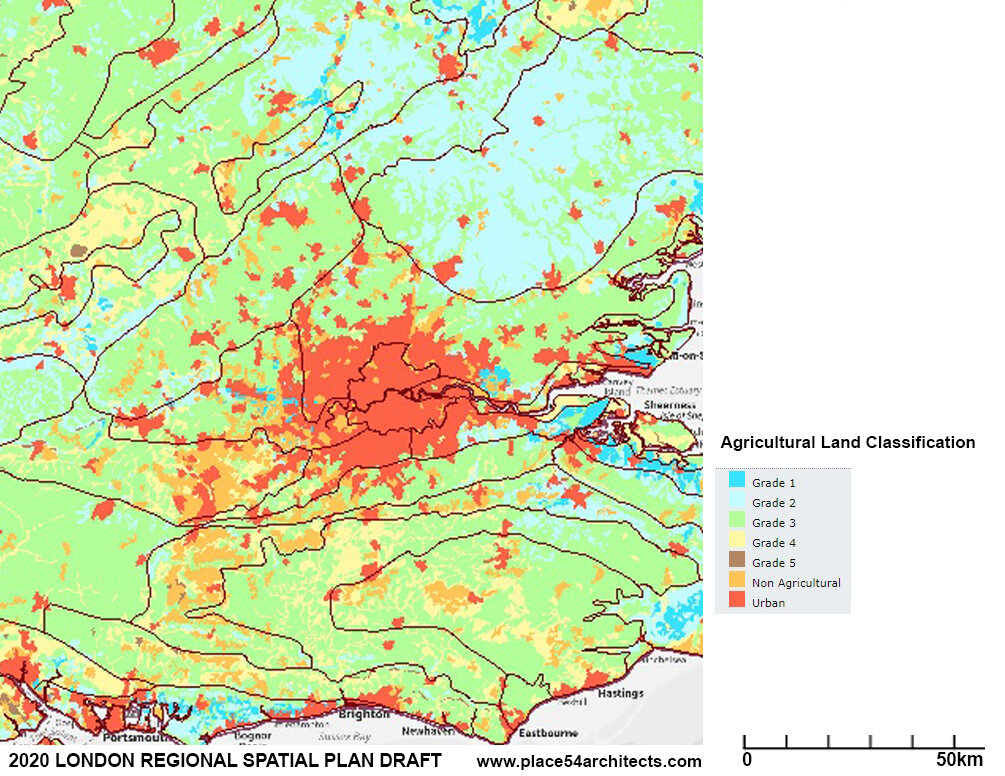
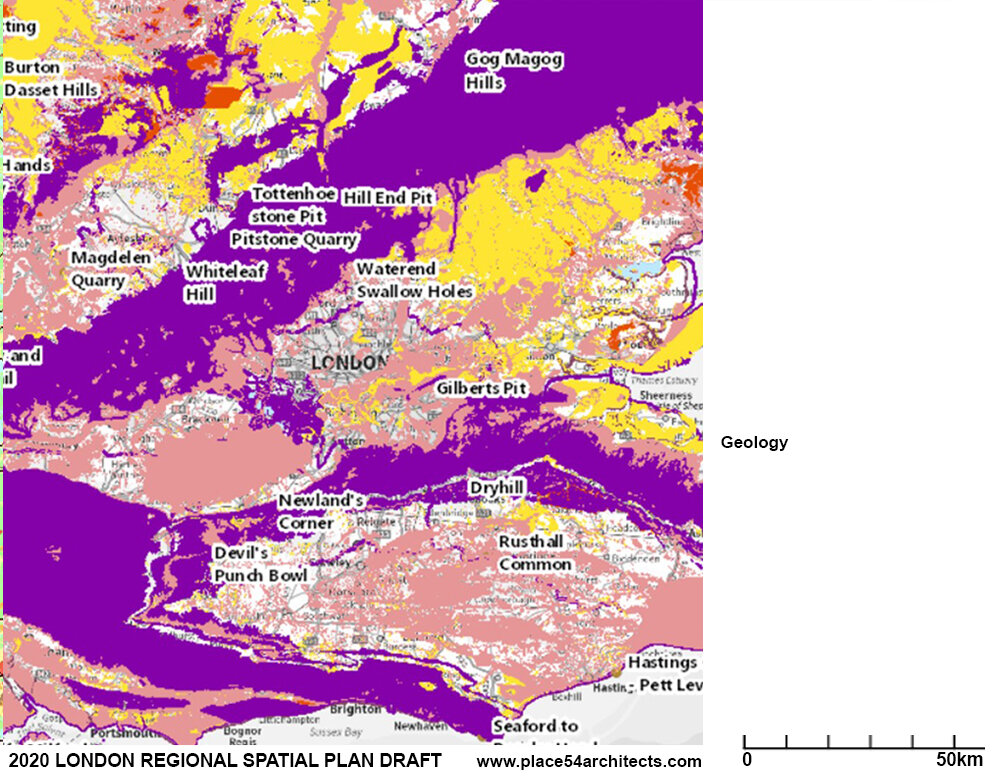
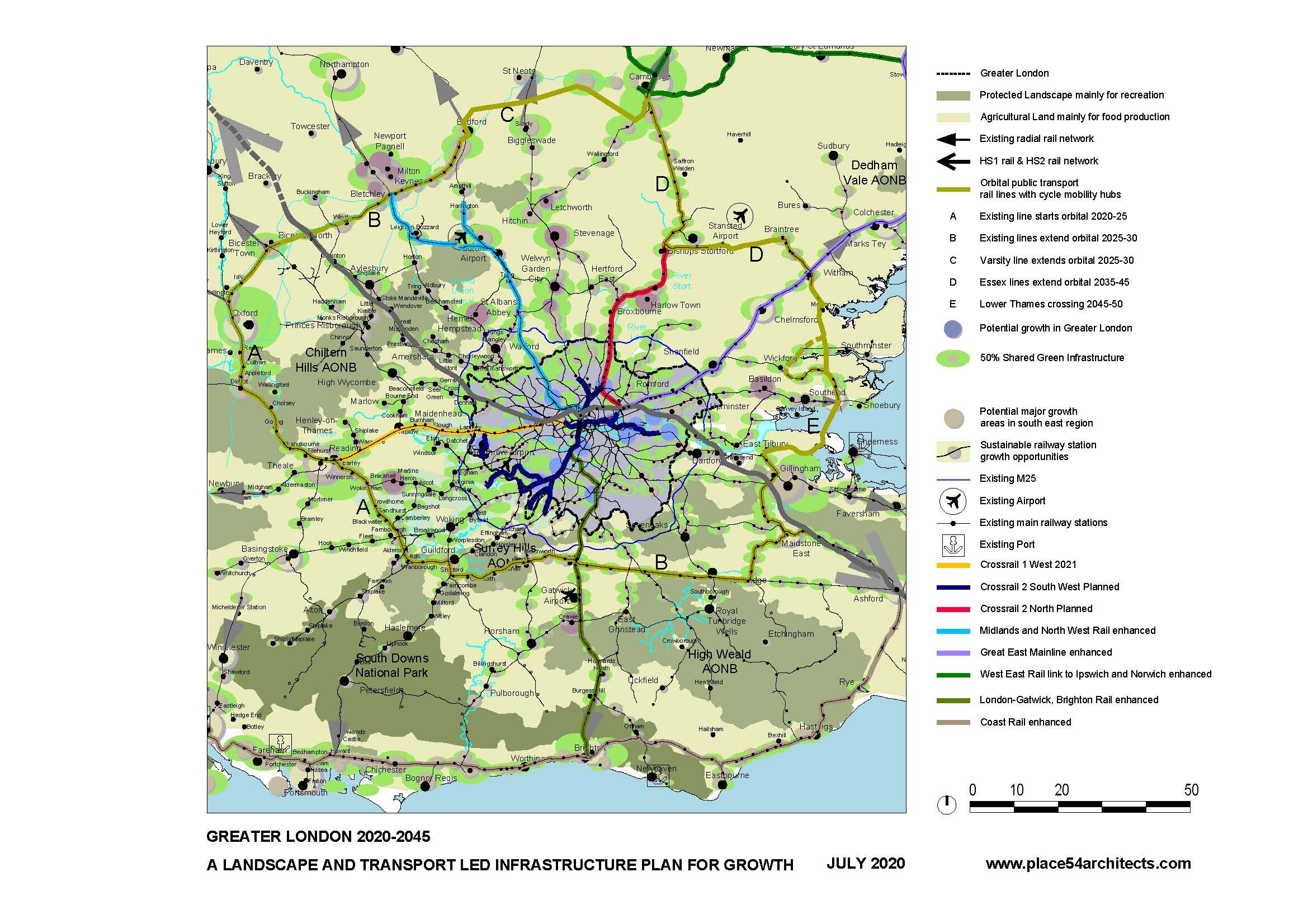
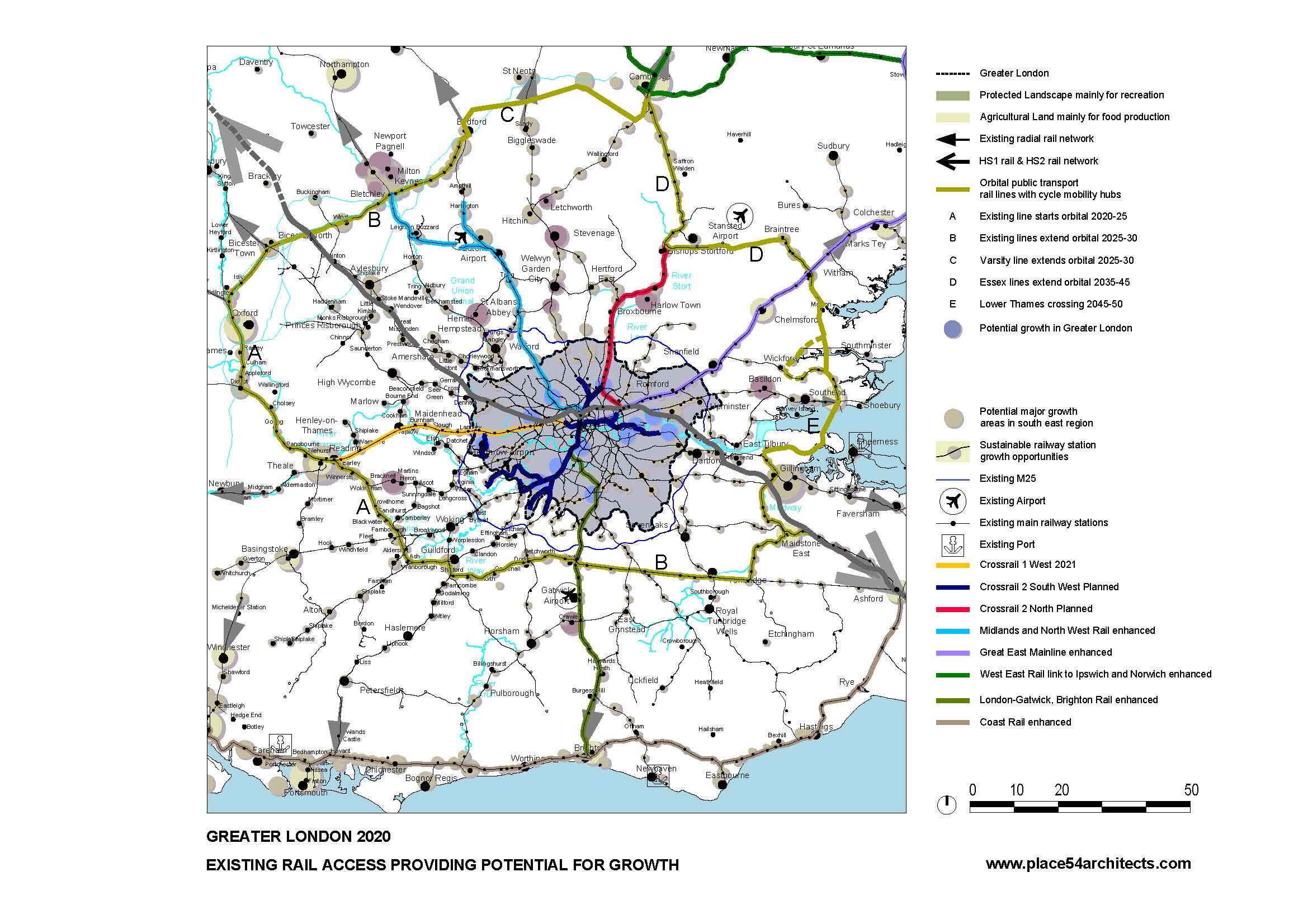
Greater London 2020 - London’s Workable Planned Future Drummond Robson Hon Sec LPDF & Gary Young, Place 54 Architects
Link here to download Planning in London 113 April 2020 pages 36 -49 by Gary Young and Drummond Robson .
· Draft New London Plan has taken three years and £2m to produce
· Housing and infrastructure needs have never been greater since the 1940s
· But
o the Planning Inspectors’ Report has reduced Borough Housing Targets by 20% so housing need is even less likely to be met
o Reviews of the plan and Green Belt are considered necessary but recommended for delay for at least 5 years
o Pressure for housing and green belt housing is now intense in the Districts adjoining GLA but lacking any coherent framework
o Elizabeth Line, HS2, Crossrail and Crossrail 2 are delayed or uncertain
· A workable and integrated Plan for London and the wider South East Region is needed now
· A better model for the regional plan is the practicable but workable Great London Plan of 1944 which took a very small team one year to produce and be consulted upon. Like all plans it was imperfect but both workable and implemented. It was based on Masterplan principles not process.
In the June to September edition of Planning in London Gary Young links the Greater London 2020 plan to Market Garden City, a concept by Gary Young and Hannah Smart demonstrating how a community could work together to provide food self sufficiency and security, essential to health and life as a fundamental goal. The concept can be scaled where an individual, starting by providing a small percentage of their own food, could with a local self sufficient community, create collective food security.. In parallel the concept would provide carbon emission reduction, energy & water supply security, protection of the natural environment and biodiversity gain, employment skills and training, education and caring.
The flexible urban design concept would integrate rural areas and urban streets and green spaces to provide a diverse mix of cultural public and functional spaces. The spatial plan identities the amount of land required for a community to safeguard food production based on the calories required and provided by predominantly vegetarian locally grown food. Climate and soil quality will determine the food grown creating diversity. Distribution will be through a hub which could be based on the traditional market hall a covered and daylit extension of the surrounding streets, modular or existing building adaptable to locations. The hub will provide collection, distribution, organised volunteering and food share linked by electric vehicle and cycle hubs.
A new form of urban place “The Green Ecumenopolis”, literally a city without boundaries, could be created with productive landscape used for local food integral to the living place. The Market Garden City becomes a focus for local initiatives, sourcing and sharing staple foods and specialties, creating public realm, supporting locally diverse cultures, lifestyles, health and wellbeing.
